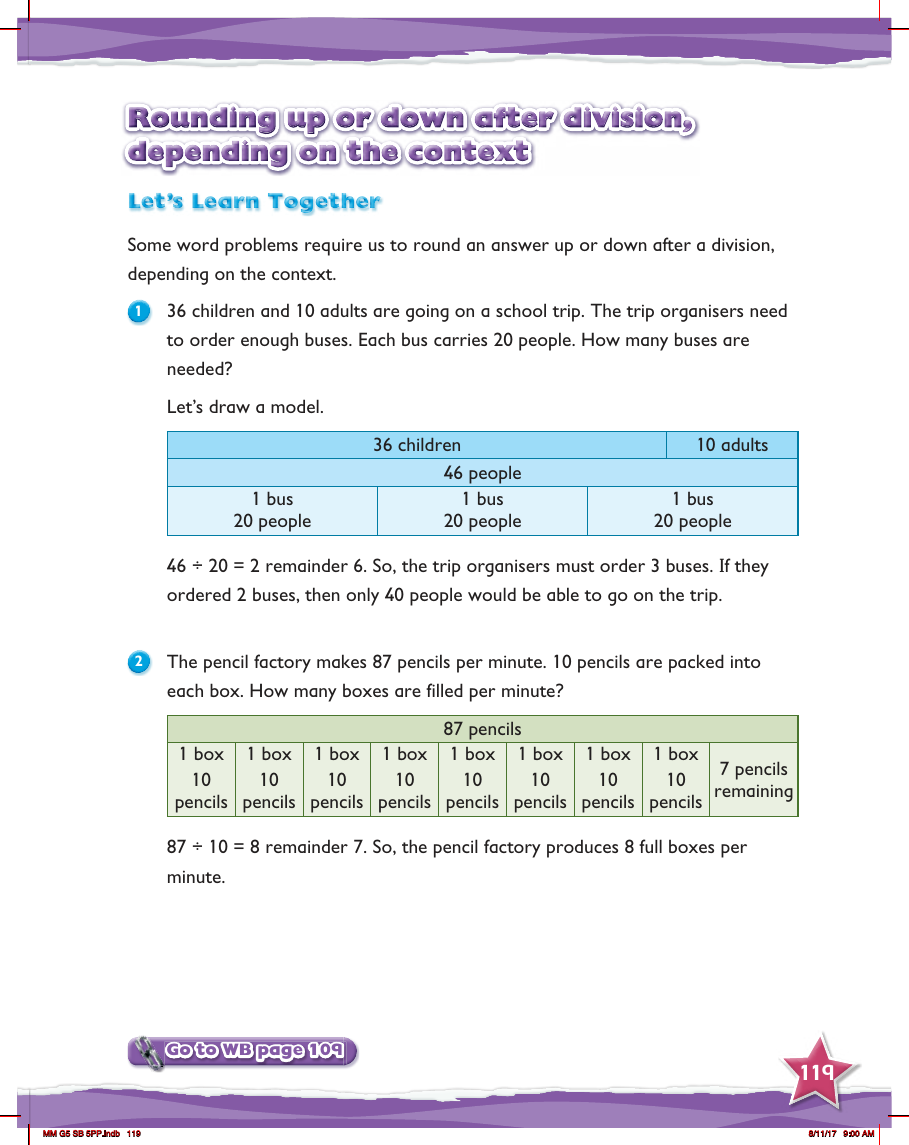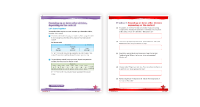Max Maths, Year 5, Learn together, Rounding up or down after division, depending on the context

Maths Resource Description
In the Max Maths curriculum for Year 5, students are taught the importance of rounding up or down after division based on the context of the problem. This concept is explored on workbook page 109, where practical applications are provided to help students understand when and why rounding is necessary. For instance, when organising a school trip with 36 children and 10 adults, the total number of people is 46. If each bus can carry 20 people, dividing 46 by 20 results in 2 buses with 6 people left over. In this context, it's crucial to round up to ensure all passengers have a seat, thus 3 buses are required.
Another scenario presented involves a pencil factory that produces 87 pencils per minute, with each box accommodating 10 pencils. When dividing the total pencils by the box capacity, we get 8 full boxes with a remainder of 7 pencils. Unlike the previous example, here we round down because we can only count full boxes. As a result, the factory fills 8 boxes per minute. These examples are designed to help students visualise the division process and apply appropriate rounding to solve real-world problems effectively.


